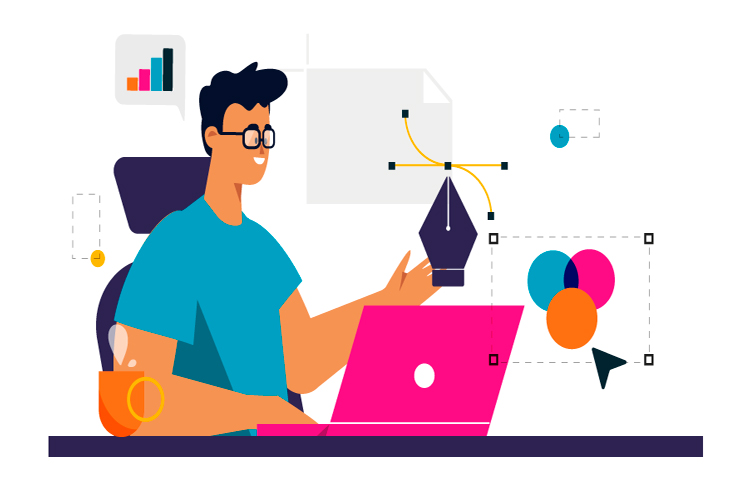Graphics Design
Exploring the Art of Graphic Design
Graphic design is a dynamic field that combines creativity, technology, and communication to visually convey messages and ideas. From brand identities to user interfaces, understanding the principles and applications of graphic design is essential for anyone involved in visual communication. Here’s a comprehensive look at what graphic design entails:
1. Definition and Scope of Graphic Design
- Visual Communication: Graphic design involves the creation of visual content to communicate messages effectively. It encompasses various mediums such as print, digital, and multimedia.
- Purpose: It serves diverse purposes, including branding, advertising, user experience (UX) design, publication design, and more.
2. Key Elements and Principles
- Elements: Fundamental elements include typography, color theory, imagery, and layout. These elements work together to create visually appealing and cohesive designs.
- Principles: Principles such as balance, contrast, hierarchy, alignment, and proximity guide designers in organizing elements to achieve clarity and visual impact.
3. Role of Graphic Design in Business and Marketing
- Brand Identity: Logos, color schemes, and visual elements help establish a brand’s identity and differentiate it from competitors.
- Advertising and Marketing Materials: Designers create engaging visuals for advertisements, social media posts, brochures, and other marketing collateral to attract and engage audiences.
- User Experience (UX) Design: UX designers use graphic design principles to enhance usability and create intuitive interfaces for websites, apps, and software.
4. Tools and Software
- Adobe Creative Suite: Industry-standard software like Photoshop, Illustrator, and InDesign are essential tools for graphic designers to create, edit, and manipulate visual elements.
- Other Tools: Sketch, Figma, Canva, and Affinity Designer are popular alternatives offering specific features for digital design and collaboration.
5. Career Paths in Graphic Design
- Graphic Designer: Creates visual concepts using computer software or by hand, developing layouts and designs for various applications.
- Art Director: Oversees the visual style and imagery for publications, advertising campaigns, and product packaging.
- UI/UX Designer: Focuses on improving user experience through intuitive interface design and usability testing.
- Freelance Designer: Works independently, often managing multiple projects for clients across different industries.
6. Trends and Innovation
- Minimalism: Clean, simple designs that emphasize clarity and functionality.
- Typography: Creative use of fonts and typography to convey personality and enhance readability.
- Responsive Design: Designs that adapt seamlessly across different devices and screen sizes.
- Animation and Motion Graphics: Dynamic visuals that engage and captivate audiences through movement and storytelling.
7. Importance of Collaboration and Feedback
- Client Collaboration: Understanding client needs and feedback to create designs that align with their vision and objectives.
- Peer Review: Seeking feedback from colleagues and industry peers to refine designs and incorporate different perspectives.
- Continuous Learning: Staying updated with design trends, software updates, and emerging technologies to remain competitive in the field.
Graphic design is more than just creating visually appealing images; it’s about effectively communicating messages and enhancing user experiences through thoughtful and intentional design. Whether you’re a seasoned professional or just starting in the field, mastering the principles, tools, and applications of graphic design can unlock countless opportunities to make a meaningful impact in visual communication.
Understanding the art and science of graphic design empowers individuals and businesses to leverage creativity and technology to create compelling visual narratives that resonate with audiences across various mediums and platforms. As technology evolves and design trends shift, graphic design remains a crucial aspect of modern communication, continuously evolving to meet the demands of an ever-changing digital landscape.
